Recent reports and images indicate that the Kangaluwi open-cast copper mine has begun development in the heart of the Lower Zambezi National Park in Zambia, threatening to permanently damage a significant portion of the park and potentially impact the World Heritage Site in Zimbabwe, as well as Mozambique.
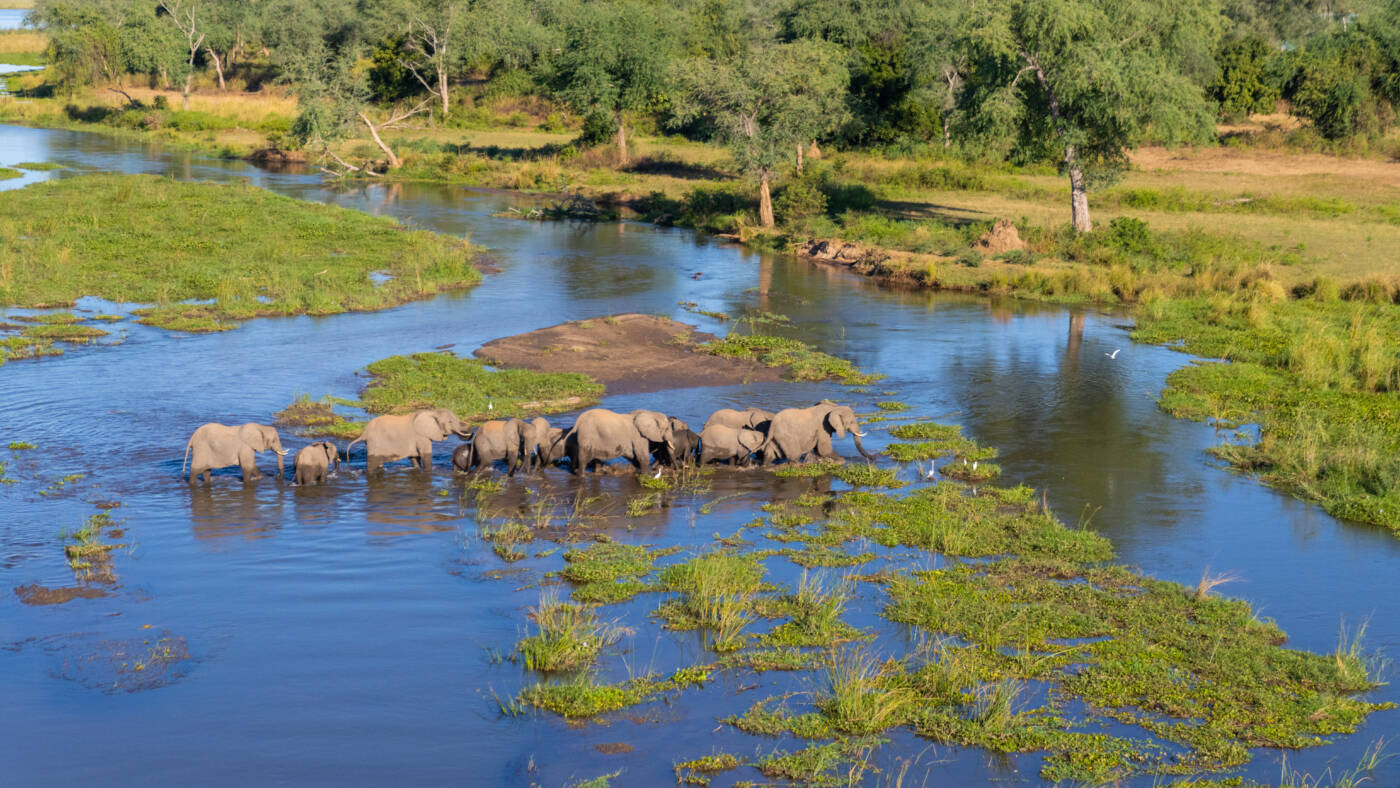
Photo by Andrew Macdonald
After almost a decade of backlash and legal interventions from stakeholders and the public, reports indicate that the development of the controversial Kangaluwi open-cast copper mine in the centre of the Lower Zambezi National Park (LZNP) appears to be underway, with aerial images in July and September 2022 showing development at the project site, including road grading, pop-up tents, an excavator and containers.
The LZNP in southern Zambia is a thriving wilderness area, abundant in diverse wildlife and home to unique vegetation, including precious endemic species. The iconic Zambezi River, which runs south of the pristine park, is a source of life for fauna and flora and secures the livelihoods of thousands of people in the region. The park’s thriving tourism sector is a crucial contributor to the Zambian economy and central to enhancing opportunities and ensuring sustainable livelihoods in southern Africa.
However, this valuable wildlife area, which forms part of the Zambezi Basin, has come under serious threat following the approval of the Kangaluwi copper mining development by Mwembeshi Resources Limited – which is owned by a Chinese conglomerate (the Majority by Hu Kaijun and Chinese government stakeholders).
Covering a vast licenced area of over 24,500 hectares, there are concerns that the extensive Kangaluwi development may not only lead to permanent ecological destruction in the national park, but also be detrimental to the greater Zambezi Basin, including Mozambique and Mana Pools National Park in Zimbabwe. Degradation of the escarpment habitat, wilderness values and river pollution are some of the key concerns amongst a long list of potential adverse impacts initially flagged by the Zambia Environmental Management Authority (ZEMA), technical experts and other stakeholders.
As highlighted in a comprehensive evaluation report of the mine by Kellie Leigh in 2014, both the Mines and Minerals Development Act (2008) and the Zambia Wildlife Act (1998) allow for mining inside national parks. There is however no policy or legislative framework to guide implementation, monitoring and mitigation of impacts, or to ensure full site rehabilitation as is outlined by the Mineral Resources Development Policy (2013) and the Mines and Minerals Development Act (2015).
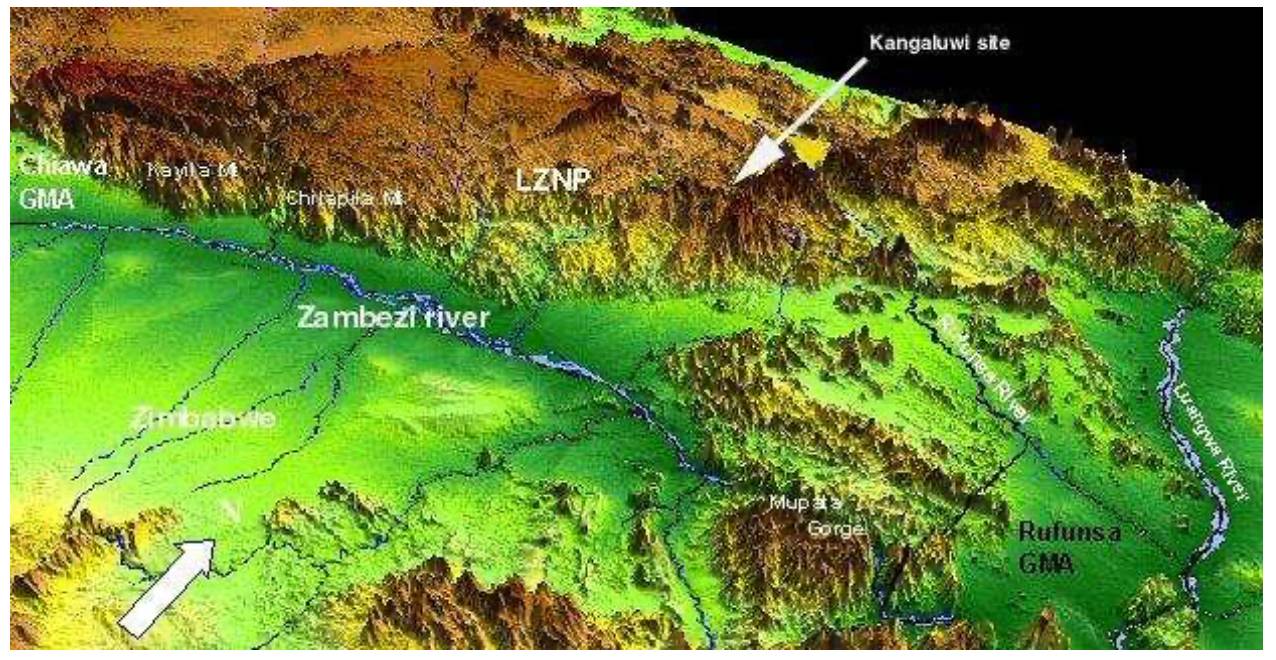
Figure 1. The central exploration site of the Kangaluwi Mine is located in a steep section of the escarpment, within a major water catchment that flows into the Zambezi River, and 3.5km from the valley floor where wildlife activity is concentrated. The project site is drained directly into the Zambezi River by several tributaries. The EIS contains vague references to a much larger scope project within the Mine Licence area but that scope was not assessed within the EIS or any other available documentation, and such a project would have vastly greater impacts on the LZNP and Zambezi River water catchment (Leigh, 2014).
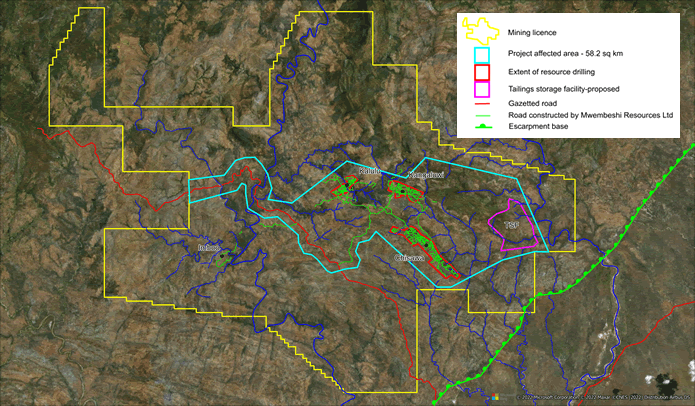
Figure 2. A satellite image highlighting the mining development. Yellow – mining licence; turquoise – project affected area; red – extent of resource drilling; pink – tailings storage facility proposed. (Anonymous).
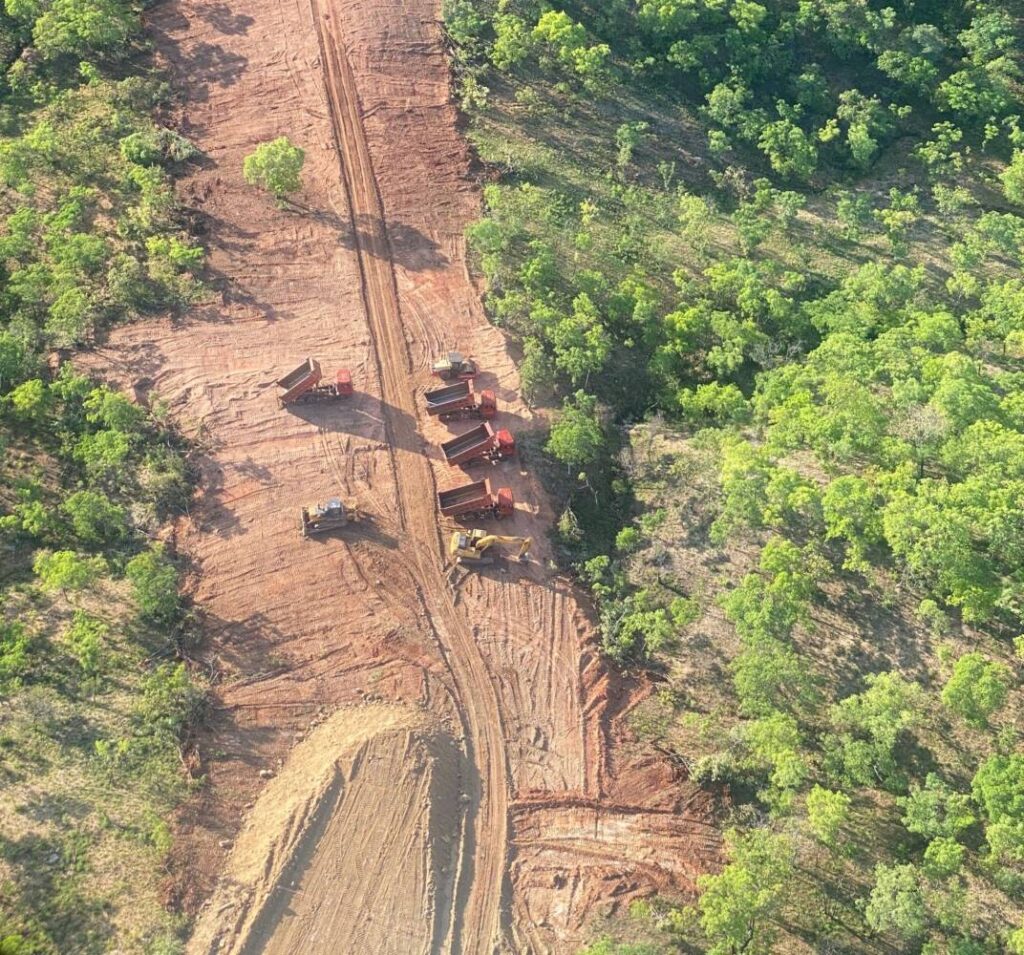
Aerial images showing recent development at the Kangaluwi mine project site including road grading and vehicles/equipment. September 2022.
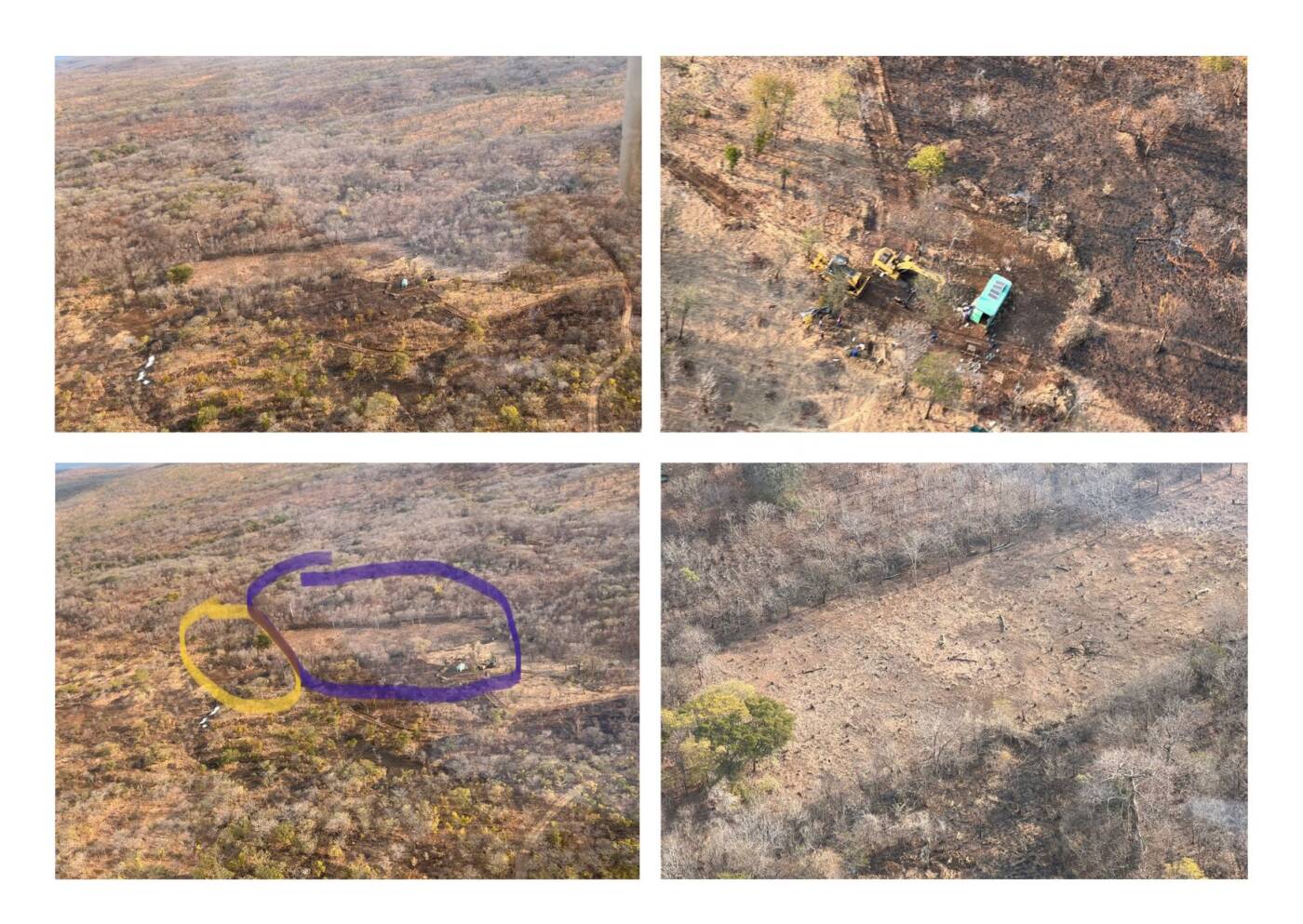
Aerial images showing recent development at the Kangaluwi mine project site including clearing, equipment and containers. July 2022.
Background and current status of the mine
In May 2021, ZEMA issued a letter approving a controversial (and previously twice rejected) Environmental Impact Statement (EIS), which included an attached addendum submitted by the developer addressing ZEMA’s queries and requests for more information. In January 2022, the Minister of Green Economy and Environment, Collins Nzovu, confirmed that the legal status of the mine is that the Ministry of Lands and Minerals had allowed it to go ahead.
The EIS addendum was submitted by the developer itself rather than an independent third-party environmental impact consultant, and was approved by ZEMA within seven working days. These issues, along with a host of other queries have since been raised with both ZEMA and the Minister of Green Economy and Environment, by citizen and stakeholder advocacy groups opposing the mine; some of which have legal representation. Many of these issues have been interpreted as a breach of process according to the S.I. No 28 of The Environmental Protection and Pollution Control (Environmental Impact Assessment Regulations, 1997).
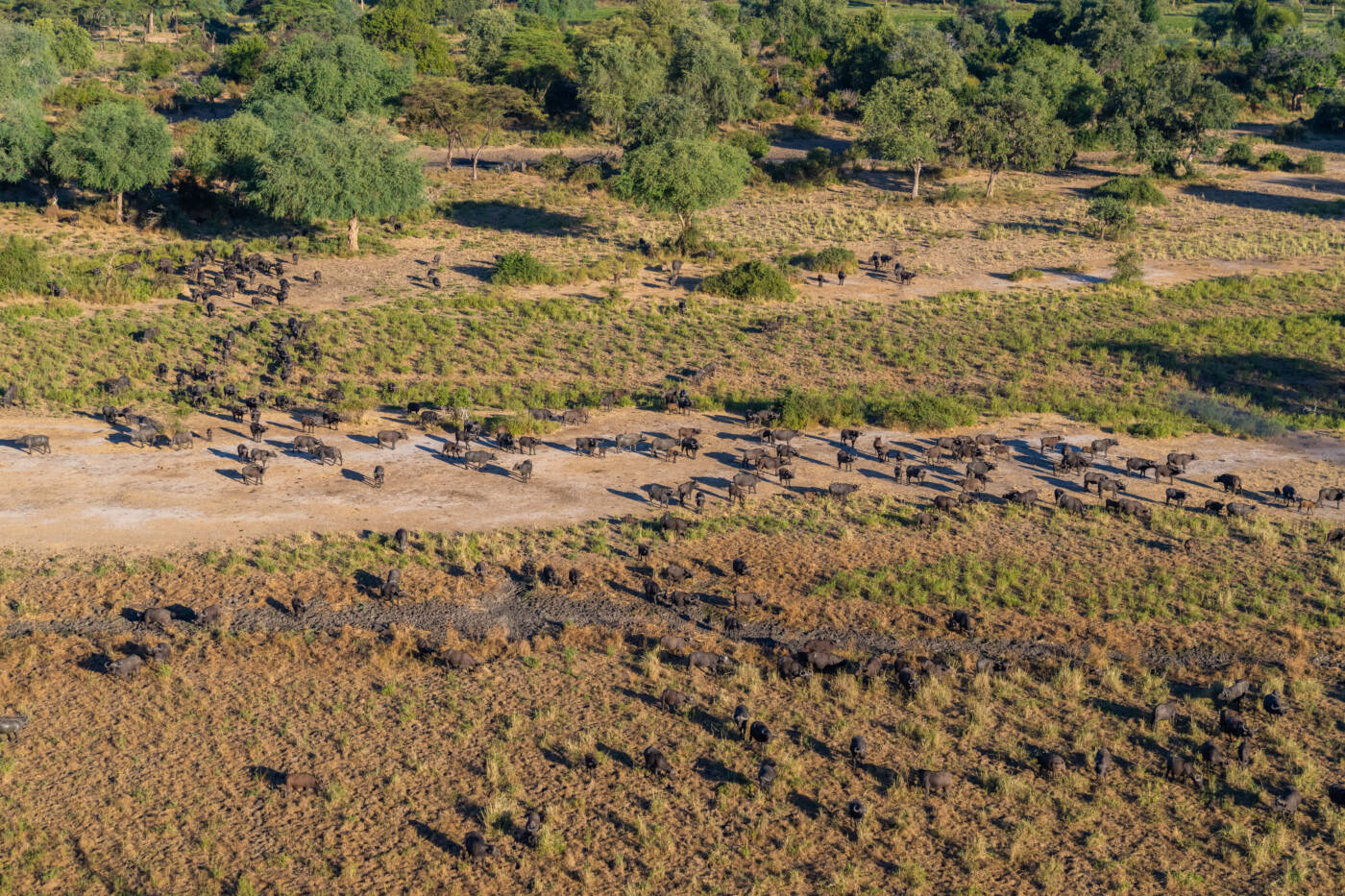
“The Lower Zambezi National Park is an integral part of the wider Zambezi Basin, which is the most significant shared resource that contributes to the economic, environmental and social development of southern Africa. Sustainable management of this resource is crucial in securing the futures of over 250 million people in the broader region that depend on it” (Save Zambezi, Safe Zambezi Campaign, 2022). Photo by Andrew Macdonald.
The submission and subsequent approval of an addendum came as a surprise to stakeholders and the mining opposition/advocacy coalitions who were expecting the developer, Mwembeshi Resources Limited, to re-register the project with the relevant authority and submit a new environmental and social impact assessment (ESIA), for some of the following key reasons:
- Considering the long list of environmental concerns highlighted by ZEMA within their initial assessment and subsequent rejection of the ESIA in 2012 which has now been once again submitted. ZEMA had concluded that: “Open-pit mining would permanently destroy the landscape of the park, thereby reducing the tourism value of the Lower Zambezi National Park…The benefits from [the] mining operations may be for a very short period of time, but the consequence may be far more reaching” (Sinyangwe, 2022);
- Nine years passed between initial submission of the initial ESIA and second submission. The Environmental Protection and Pollution Control (Environmental Impact Assessment) Regulations, section 30 says that if, following the preparation of a project brief or environmental impact assessment, an authorisation licence, permit or permission has been issued but no land preparation or construction work has started within three years, then the developer must re-register with the authorising agency any intention to develop;
- ZEMA had stated in their initial decision letter in 2014 approving the ESIA upon the Minister of Lands directive that the developer would have to resubmit an ESIA if the developer failed to implement their project in three years (clause 3.4). This means that ZEMA itself indicated a new ESIA would have to be submitted if the project lapsed;
- That the public was not notified and stakeholders were not consulted in the latest review of the ESIA with addendum, which goes against section 91 (1) (2) (3) and 92 of the Environmental Protection Act No 12 of 2011, which says that the public have the right to be informed of and participate in the intention of authorities to make decisions regarding the environment;
- Ministerial statements in 2019 by the Minister of Tourism and the Minister of Mines had relayed to the public that the project could only commence with the resubmission of an EIA and the approval of the Minister of Tourism and Arts.
It is also worth noting that since the EIS submission in 2012, the nature of the underlying copper resource changed from copper sulphide to copper oxide, yet no new EIS documents have been supplied nor any announcements made to Zambian authorities or stakeholders as highlighted in the 2014 Evaluation Report by Leigh (2014).
The decision by ZEMA sparked a nation-wide campaign called Save Zambezi, Safe Zambezi (SZSZ) driven by a coalition of concerned citizens, NGOs and other stakeholders. The campaign reached over 1.2 million people around the world in six months. Despite the public outcry, which engaged several local celebrities, the campaign did not reach its goal in pressurizing the Zambian government to retract the decision to allow the copper mine. However, it did create much needed local and global awareness of the mine, the scale of the project and its potential devastating impacts – garnering much support from the Zambian public and regional organisations.
Earlier in 2022, a smaller group from the coalition decided to pursue litigation, which is now being driven by the NGO Conservation Advocates Limited. The NGO currently awaits (at the time of publishing this article), a response from the new ZEMA board to a letter of request for the agency to review its approval of the EIS addendum. The review request was submitted as per the procedure laid out in the Environmental Management Act, No 12, 2011, which enables a person who is aggrieved by a decision by the agency to request a review of that decision.
However, not all stakeholders have opposed the mine, with some local chiefs and authorities as well as many Zambian citizens supporting the project. Some of the traditional authorities that are vehemently advocating for the mine to go ahead hail from some of the poorest communities in Zambia and feel hopeful that the mine will bring much needed jobs to their communities.
This expectation has been created by the mining developers and representatives which have promised royalties, benefits and up to 2,500 jobs, albeit many of them indirect through contractors and supply chains. Those privy to the mining development plans and the original ESIA however, are concerned about these inflated numbers being publicised, which has driven the debate about the mine to become highly politicised with the miners playing on the sentiments of job creation. As per page 34 of the Environmental Impact Statement, “It is estimated that a personnel of about 300 persons will be required for the project”. This is supported by a table titled ‘Manpower Summary’ which illustrates the manpower will be split into ‘General Admin and Technical’ (60 jobs), ‘Process’ (90 jobs) and ‘Mining Contractors’ (150 jobs). In addition, page 195 of the EIS says that an estimated initial workforce of 250 will be recruited by the mine. Page 262 says that, “The Kangaluwi Copper Project will operate for approximately 20 years and will employ about 250 employees”.
Some local authorities took an opportunity to voice their opinion at a recent stakeholders consultative meeting with UNESCO experts about the proposed Lower Zambezi Escarpment Biosphere Reserve (LZEBR) held in May 2022 in Luangwa. The meeting was held to discuss the way forward to establish a UNESCO Biosphere Reserve, for which the proposal has been rejected twice due to the proposed copper mine development, which is not in line with the principles of a Biosphere Reserve. Find out more here.
VIEW A SUMMARY OF THE TIMELINE OF KEY EVENTS FROM 2011 – 2022
Environmental Impact
The mine licence covers 24,500 hectares with the overall operations including road infrastructure and power lines covering an estimated 28% of the National Park (see figure 3 below).
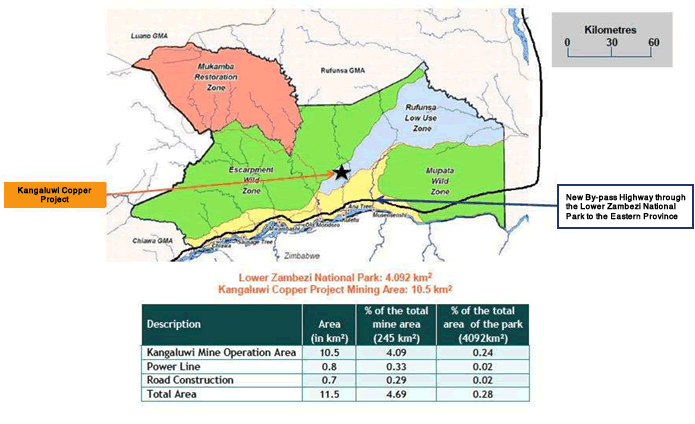
Figure 3: From Evaluation Report: Kangaluwi open-pit copper mine in the Lower Zambezi National Park (Leigh, 2014).
The Save Zambezi, Safe Zambezi campaign coalition expressed that the mine could not only risk contaminating water for communities in Zambia and Zimbabwe but for the entire Zambezi Delta, potentially destroying fishing and farming livelihoods, posing a particularly high threat to communities downstream where the risk of contaminating water is extremely high. “River pollution caused by the mine could threaten the Zambezi River’s 2,000-ton subsistence fishery, which directly provides food and protein security to 20,000 people along the river’s banks” (Save Zambezi, Safe Zambezi Campaign, 2022).
An independent expert review of the EIS revealed a high likelihood of contamination events that were not considered by the company. “Contrary to the Project EIS which states the Project will be downstream from the World Heritage Site, it lies directly opposite and shares a common water resource, the Zambezi River. Any major contamination events such as ARD are likely to impact the World Heritage Site. Mana Pools was also designated as a wetland of international conservation significance under the Ramsar Convention on Wetlands in 2013, emphasizing the importance of the regional water resources” (Leigh, 2014).
Another major concern is the impact on the tourism industry, with the Zambezi Basin being one of the most significant tourism destinations for Zambia, Zimbabwe and Mozambique. “Eco-tourism in the area depends largely on the renewable wildlife and habitat resources and contributes significantly to the local and national economies around the LZNP. Tourism establishments in the park and surrounding Game Management Areas (GMAs) employ more than 1,000 local people, generating a local wage bill of $4 million annually that indirectly supports thousands more people at a local community level” (Save Zambezi, Safe Zambezi Campaign, 2022).
In addition, the campaign also highlighted that the mine threatens upcoming conservation projects, including the $12.5 million Lower Zambezi Flagship Species Restoration project, which aims to bring back locally extinct species such as the black rhino and eland, thereby restoring biodiversity and improving ecosystem processes in the area (The Threat of Harmful Development, 2021).
A summary of ZEMA’s findings upon reviewing the initial Environmental and Social Impact Assessment:
(Summarised from Mr Musukwa MP, the Hon. Minister of Mines and Minerals Development, ministerial statement in 2019 confirming that the ESIA was rejected by ZEMA).
- Risk of tailing storage facilities failing as they are located in the Zambezi Escarpment, an area prone to earthquakes. Failure of these tailing facilities would have significant impact extending to neighbouring countries;
- The mine’s proposed location is at an area of higher elevation in the escarpment and around 30 km away from a UNESCO World Heritage Site, Mana Pools, in Zimbabwe. Failure of tailing storage facilities or any abnormal discharge would negatively affect this area;
- The issue of acid rock drainage and consequently the metal leaching was not addressed by the EIA. The report stated the potential to generate acid, however it did not state mitigation measures both in the short-term and long-term. On that score, ZEMA rejected the proposal;
- The proposed mine site would be located in the middle of the national park. The adverse impact of the open pit mining would therefore permanently destroy the landscape of the game park. The developer did not provide an alternative location to avoid disturbing the natural habitat;
- The environmental footprint would be exacerbated by the construction of roads, power lines, and other associated works related to the mine, compromising the integrity of the national park and its ecological value in the long-term;
- The estimated mine life was not based on verifiable facts as the ESIA was full of contradictions. Did not include enough verifiable facts to properly estimate the mine life, or period of extraction. The potential benefits from this mining operation may be limited in comparison to the far-reaching consequences.
In addition, the minutes of the ZEMA EIA Approval Committee of July and August 2013 (Request to Nullify the Decision on the EIA, 2022) raised potential transboundary impacts including:
- Disturbance of the transboundary movements of wildlife between Lower Zambezi National Park and Mana Pools National Park;
- Seismic impacts which may go beyond Zambia into Zimbabwe and Mozambique, following the geological formation of the area which is an extension of the Great Rift Valley;
- Potential increase in sedimentation of the Zambezi River and pollution from tailing material resulting from processes which might affect water use in Mozambique.
The letter also stated that: “There is no information to show that ZEMA disclosed their concerns or consulted with the potentially affected countries, Zimbabwe and Mozambique, through the Ministry of Foreign Affairs during the review process” (Request to Nullify the Decision on the EIA, 2022).
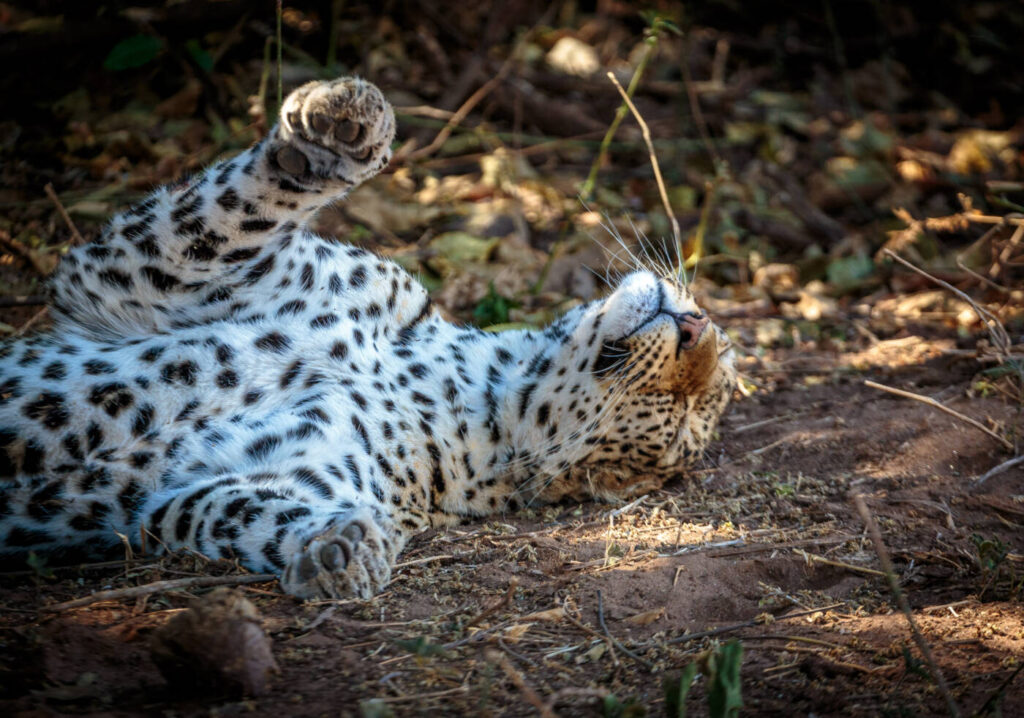
The proposed site for the mine lies in Lower Zambezi National Park (LZNP), an International Conservation Union (IUCN) category II protected area in South-Eastern Zambia, on the Zambezi River, which lies within close proximity of the Kafue and Luangwa Rivers. In addition, the Lower Zambezi National Park (LZNP) shares boundaries with the Mana Pools World Heritage site to the south and is also being considered for designation as a World Heritage site by UNESCO (Update on the Proposed Mine, 2021). Photo by Lev Kaytsner.
Conclusion
The primary reason and rationale for the Kangaluwi mine, despite the publicly known and agreed potential trans boundary environmental devastation is the supposed economic benefits including the 2500+ promised work opportunities for people residing in some of Zambia’s poorest areas. Indeed the benefit to the Zambian economy as well as disenfranchised rural communities should not be discounted or overlooked. However, the 2014 evaluation paper by Leigh specifically scrutinised the cost benefit analysis of the project and assessed whether the project was likely to benefit Zambia, and whether “sufficient capacity exists to ensure it does not negatively impact the health and wellbeing of communities, or the biodiversity values for which protected areas are set aside”.
The assessment at the time concluded that, based on modelling figures, the project is not economically viable and will result in a net loss of jobs for local communities and will generate a financial loss over the first seven years of operation of a minimum of US$13 million. It also proposed that the economic risk created by mining is exacerbated in protected areas, due to potential impacts on community development programmes as well as sustainable tourism, with a minimum of US$5 million of NGO investment in community programmes at risk regarding this particular project. It says from a broader perspective, the impact on international aid investment of which Zambia receives over US$1 billion annually and is heavily reliant on, should be thoroughly explored during the formulation of legislation and policies that consider mining in the protected areas.
The evaluation also mentions the considerable risk of long-term damage beyond the life of the project to the health and wellbeing of communities, wildlife and the environment, with no evidence provided by the developers that would ensure the preservation of air, water, soil, fauna, fish and fisheries, or the protection of human health in the national park. These risks are not limited to the national park but will have cross-border implications, most significantly impacting cross border fisheries with the high likelihood of contamination.
The assessment also revealed that all data indicates that the project developer lacks the expertise and competence to undertake responsible mining practices within a sensitive ecological environment and important water catchment and that its track record demonstrates a clear lack of commitment to corporate social responsibility and community development. It says that the extremely poor quality of the data provided by the developer has prompted questions from mining experts about whether the contradictory and vague information presented is intentionally misleading, or demonstrates gross incompetence.
“The proposed mining operation in the middle of the national park poses the biggest threat in history to the wildlife and pristine wilderness that has survived so many centuries of challenges and supported generations of Zambians,” (Late) Dr Kenneth Kuanda, first president of Zambia (Sinyangwe, 2022).
Zambezi Valley Conservation Network comment and call for support
While Zambian legislation allows mining in wildlife areas and national parks, it is clear that there are obvious gaps in the legislation and policies and that the frameworks to guide the planning, implementation, and monitoring and evaluation are detrimentally inadequate. Taking into consideration the plethora of independent assessments which raise numerous concerns about the potentially severe social, economic and environmental impact, it is inconceivable that the Zambian government has decided to go forth with this project. Not only could the development be detrimental to its own economy, people and wildlife, but to the communities, environment and economies of its neighbouring countries, with the long-term and possibly irreversible negative impact far outweighing the limited, short-term gains.
Moreover, the Zambian government has authorised a project impacting the largest shared water resource in the SADC region without conducting any regional stakeholder engagements or acknowledging the potential impact on livelihoods regionally. They have also made no effort to reassure Zimbabwe and Mozambique that the developer has sufficient technologies and strategies to mitigate the highlighted potential impacts as found by ZEMA in their review of the developers initial EIA.
The Zambezi Valley Conservation Network supports the Zambian advocacy and stakeholder groups who are opposing and actively fighting the Kangaluwi development, and calls on the Zimbabwean public and the stakeholders of the middle-lower Zambezi Valley in northern Zimbabwe to join us to take a stand against the Kangaluwi copper mine development, and support us to mobilise relevant local authorities to engage with the Zambian government on this issue.
How can you help to stop the copper mine?
- Support the coalition led by NGO Conservation Advocates Limited in Zambia in their litigation. A legal procedure has been identified as the most effective way to fight the mine, however it is a lengthy and financially resource intensive exercise. If you would like to support this cause please contact .
- Help to spread awareness of the Kangaluwi Copper Mine development by forwarding and sharing this article and associated posts regarding this issue on our Facebook page. (https://www.facebook.com/ZambeziConservationNetwork/)
- Sign the petition
Written by Jaeninne Norris (Coordinator) I Assisted by Caton Schutte (intern)
___________________________________________________________________________________________________________________________________
The Zambezi Valley Conservation Network thanks Conservation Lower Zambezi, Mizu Eco-Care and associated consultants for their contributions in providing comprehensive information needed to compile this article and assisting the Zambezi Network to create awareness of the potential impact of the Kangaluwi mine on the Zambezi basin.
The authors have taken reasonable steps to ensure the information provided in this article has been obtained from credible sources which are referenced below. Zambezi Valley Conservation Network presents this information in good faith in furtherance of conservation efforts in the Lower Zambezi Valley and is not responsible for inaccuracies and/or omissions pertaining to the information provided or the results from using this information. Queries or suggestions are welcomed and can be submitted to with the reference “Kangaluwi Mine”.
RESOURCES
Action Plan for Implementing the Convention on Biological Diversity’s Programme of Work on Protected Areas. 2012. (Accessed: August 2022)
Comments on the EIS Submitted to ZEMA on 14 March 2012 and Addendum Submitted on 28 April 2021 regarding the Kangaluwi Project, Lower Zambezi National Park. 2022.
David Ngwenya v Attorney General and Mwembeshi Resources Limited. 2021. Court of Appeal of Zambia, Case 001/2020.
Environmental Impact Assessment Regulations: Environmental Protection and Pollution Control Regulations. 1997. Statutory Instrument 28.
Hoel, A. 2015. Collaborative management of the Zambezi River Basin ensures greater economic resilience. Available from: https://www.worldbank.org/en/news/feature/2015/09/10/collaborative-management-of-the-zambezi-river-basin-ensures-greater-economic-resilience. (Accessed: September, 2022)
I did not grant licence to mine in Lower Zambezi, it was a cabinet decision – Kalaba. 2019. Available from: https://www.lusakatimes.com/2019/10/28/i-did-not-grant-licence-to-mine-in-lower-zambezi-it-was-a-cabinet-decision-kalaba/. (Accessed: September, 2022)
Katota, E. 2022. It wasn’t me – Kalaba. Available from: https://www.znbc.co.zm/news/it-wasnt-me-kalaba/. (Accessed: September, 2022)
Leigh, K. 2014. Evaluation Report: Kangaluwi open-pit copper mine in the Lower Zambezi National Park. Available from: https://www.academia.edu/17072179/Evaluation_Report_Kangaluwi_Open_pit_Copper_Mine_in_the_Lower_Zambezi_National_Park_Zambia. (Accessed: September, 2022)
Malisa, M. B. 2022. Letter to ZEMA Chairperson of the Board. 28 July.
Malunga, J. 2019. Govt collectively agreed to allow mining in Lower Zambezi – Kalaba. Available from: https://diggers.news/local/2019/10/28/govt-collectively-agreed-to-allow-mining-in-lower-zambezi-kalaba/. (Accessed: September, 2022)
Map Concession Area and Topographic Map. n.d. Zambezi Resources Limited. (Accessed: August 2022)
Map of Kangaluwi Copper Mine and likely affected area. 2022. Satellite map graphic. Anonymous mining expert. (Accessed: September 2022)
Mine Ownership. 2022. Organigram. Anonymous UK-based intelligence agency contracted to investigate the history and status of development ownership. (Accessed: September 2022)
Mizu Eco-Care. 2022. A Biosphere Reserve and a Copper mine in Lower Zambezi NP – A controversial debate. Online Video. Available from: https://www.youtube.com/watch?v=nkZajDohRqg&t=2s. (Accessed: September, 2022)
Msimuko, J. 2021. Letter to the Director of Mwembeshi Resources Limited. 7 May.
Musukwa, R. 2019. Kangaluwi Copper Project Timeline. Timeline graphic. (Accessed: August 2022)
Musukwa, R. 2019. The Status of Kangaluwi Copper Project in Lower Zambezi National Park.
Mwenda, M. 2020. Zambia cancels plans to build open-pit Kangaluwi copper mine in a national park. Available from: https://www.lifegate.com/zambia-cancels-kangaluwi-mine. (Accessed: August 2022)
Nkomesha, U. 2019. Lungu supported mining in Lower Zambezi, he promised chiefs – Kalaba. Available from: https://diggers.news/local/2019/11/07/lungu-supported-mining-in-lower-zambezi-he-promised-chiefs-kalaba-2/. (Accessed: September, 2022)
Nzovu, C. 2022. Letter to Coalition of Zambian Citizens and NGOs. 22 February.
Phiri, T.K., Glissen, S. 2022. Report on the Stakeholders Consultative Meeting with UNESCO experts about the proposed Lower Zambezi Escarpment Biosphere Reserve 10 May 2022. Luangwa Boma, Justfeli Lodge.
Request to nullify the decision on the EIA for the proposed mining activities in the Lower Zambezi National Park by Mwembeshi Resources Ltd. 2022.
Robert Chimambo v Attorney General and Zambia Environmental Management Agency. 2022. Constitutional Court for Zambia, Case 2022/CCZ/003.
Save Zambezi, Safe Zambezi Petition. 2021. Available from: https://www.change.org/p/president-hakainde-hichilema-save-zambezi-safe-zambezi-people-water-land-and-wildlife?utm_source=share_petition&utm_medium=custom_url&recruited_by_id=e1ed1ef0-a1dd-11eb-a588-a9514d6d3357.
Sinyangwe, C. 2022. Zambia: Hichilema backs open pit mine in national park, in test of reform promises. Available from: https://www.theafricareport.com/175710/zambia-hichilema-backs-open-pit-mine-in-national-park-in-test-of-reform-promises/. (Accessed: September, 2022)
teamAG. 2021. Lower Zambezi copper mine given the go-ahead. Available from: https://africageographic.com/stories/copper-mine-in-lower-zambezi-np-given-the-go-ahead/. (Accessed: September, 2022)
The threat of harmful development on the Zambezi River. 2021. Available from: https://www.lusakatimes.com/2021/06/23/media-statement-on-the-threat-of-harmful-development-on-the-zambezi-river-basin/. (Accessed: September, 2022)
UNESCO. 2019. International Coordinating Council of the Programme on Man and the Biosphere, 31st, Paris.
UNESCO. 2021. International Coordinating Council of the Programme on Man and the Biosphere, 33rd, Abuja.
Update on the Proposed Mine in Lower Zambezi. 2021. Available from: https://conservationlowerzambezi.org/update-on-the-proposed-mine-in-lower-zambezi-2021/. (Accessed: August, 2022)
Venturi, P. 2022. Kangaluwi Copper Mine in the Lower Zambezi National Park, Zambia, Available from: https://ejatlas.org/conflict/proposed-kangaluwi-copper-mine-in-the-lower-zambezi. (Accessed: September 2022)
Vincent Ziba, Morgan Katati, Noah Zimba, Robert Chimambo, Kasampa J. Tembo and David Ngwenya v Attorney General and Mwembeshi Resources Limited. 2019. High Court for Zambia, Case 2014/HP/A006.
World heritage committee on threats to some of Africa’s most iconic protected areas. 2021. Available from: https://www.newsday.co.zw/2021/07/world-heritge-committee-on-threats-to-some-of-africas-most-iconic-protected-areas. (Accessed: October, 2022)
Zambezi Basin. 2021. Available from: https://en.wikipedia.org/wiki/Zambezi_Basin. (Accessed: October, 2022)
Zambia Community Based Natural Resource Management Forum, Zambia Institute of Environment Management, Zambia Climate Change Network, Chalimbana River Head Waters Conservation Trust, Green Living Movement and David Ngwenyama v Attorney General and Mwembeshi Resources Limited. 2014. High Court for Zambia, Case 2014/HP/A006.
Zambia Mining Cadastre Map Portal. N.d. Available from: https://portals.landfolio.com/zambia/. (Accessed: October, 2022)
Zambian mine threatens lower Zambezi – Please sign the petition against it. 2021. Available from: https://zamsoc.org/news/2021/7/21/zambian-mine-threat-to-lower-zambezi-re-emerges-please-sign-the-petition-against-it. (Accessed: August, 2022)
Zamobserver. 2021. Save Zambezi, Safe Zambezi Petition. Available from: https://zambianobserver.com/save-zambezi-safe-zambezi-petition/. (Accessed: August, 2022)
Zimbabwe civil society supports bid to prevent large scale copper mining in Lower Zambezi National Park, Zambia. 2014. Available from: https://zamsoc.org/news/1969?fbclid=IwAR3l8_o2wDAVDGLIF3HDAjIRfdtmWFptAdoRCTMoml5-yn1GB5IsgcHRx-8. (Accessed: September, 2022)

